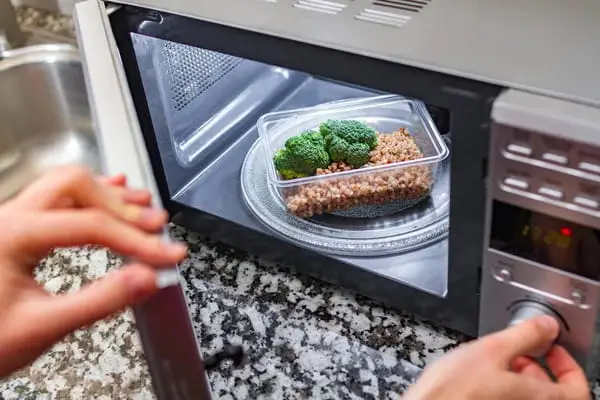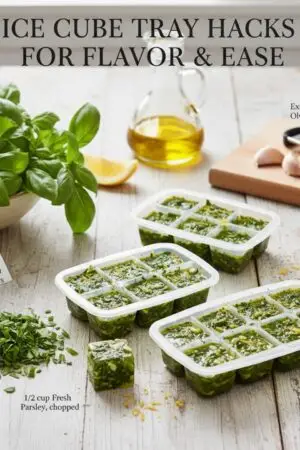“I melted plastic in oven can I still eat food?”
We hear this question quite often, and we are here to answer it once and for all.
After all, it does happen sometimes. You heated food in the oven, but for some reason, you accidentally left the plastic on the container until it melted.
Is the food still safe to eat or not?
The answer depends on a number of factors, which is why we will address this topic today. Find out more about how safe – or not – is it to eat food with melted plastic in the oven. Let’s get started.
Melted Plastic In Oven Dangerous Or Not

It is true that melted plastic in oven is dangerous. There are a few reasons why you should avoid eating food when you have found that the plastic melted in the oven. Here they are:
1. Toxins
First is the safety aspect. If you accidentally left melted plastic in your oven for a while, this releases toxic components into the air. You may either ingest or inhale the chemicals each time you open your oven door. So, it is not a good idea to eat the food when it is contaminated with harmful chemicals from melted plastic.
2. Safety Risks
Aside from accidentally ingesting or inhaling toxic elements from melted plastic, there is also a safety risk from this material. Leaving melted plastic in the oven – no matter how small it may be – can trigger electrical shocks or even fire. If electrical appliances are near to your oven, these could contact the contaminated surface with melted plastic.
3. Skin and Eye Irritation
Additionally, the melted plastic can irritate your eyes and skin when small pieces get into these body parts. Moreover, you may not even be aware that melted plastic is already in your eye or skin since the pieces are so small that you may not easily notice them.
4. Health Issues
Furthermore, the smell of melted plastic can make you nauseated and there is a risk of coughing or choking. It is also possible that these plastic pieces can leech and get into your food without knowing it, then ingest by accident. The chemicals in the plastic may also be carcinogenic, thus posing serious health concerns.
With all these things in mind, it is best to avoid eating food with melted plastic. It is better to be safe and sorry, which is why steering clear of these toxic materials is a smarter choice for your health and well-being.
How To Get Melted Plastic Off Oven
Now that you know whether it is safe or not to still eat food with melted plastic, let us talk about cleaning up the mess.
When you clean the oven, there are different ways to go about this task, depending on the kind of oven you have. This is why there is no such thing as a one-size-fits-all method for cleaning.
Here are the different oven types and ways to clean melted plastic off of it.
1. Basic Electric Oven
If you have a standard of basic type of electric oven, then cleaning the melted plastic may take some waiting. You need to allow the oven to cool off before you can begin cleaning. Then, place an ice bag right onto the melted plastic. This will allow the plastic to turn brittle.
At this point, the melted plastic should appear more like a puddle that you can lift using a scraper such as a razor blade. However, be very careful as you do this since you do not want to damage the oven or hurt yourself along the process.
2. Self-Cleaning Oven
Nowadays, there are more advanced types of ovens that come with a self-cleaning function. If this is what you have at home, simply turn the oven on and put it on the lowest setting. Wait for a little bit until the plastic has become slightly pliable. This way, you should be able to lift it with a spatula or a spoon.
There is a risk of causing damage to the oven floor if you use other materials that are sharp. So, it is best to stick to these tools.
3. Gas Oven
In the case of a gas oven, you will have to turn it off first before doing anything. Then, slide the bottom panel out. You may need to unscrew it first, so you can lift off the base plate. Once you have removed this component, you can place it into the freezer.
The goal is to freeze the plastic, so it can turn brittle and will be easier for you to remove completely. In case it seems too complicated for you, an alternative is to use an ice bag until the plastic becomes brittle.
Consider trying these techniques, so you will be able to remove plastic safely out of the oven and avoid burning and melting it even more each time you use this kitchen equipment.
How To Clean Melted Plastic From Oven

When you have already removed the melted plastic, now you want to clean up the mess. Removing plastic is one thing but cleaning the debris up completely is another. Plastic can also be gooey and messy, and it can get inside the stovetop, heating elements, and so on.
When cleaning plastic from your oven whether electric or gas, you need to follow the following steps to get it done neatly and thoroughly.
1. Get your materials ready.
No matter what type of oven you have, you need to prepare certain tools such as dish detergent, razor scraper, ice bags, scrubbing pad, and ice bags. When you have these ready, you can proceed to the next step.
2. Scrape the plastic off.
Pull the racks that contain melted plastic. Once the plastic has cooled, you should be able to scrape it off. However, if it is still hard to do, use ice bags and put these over the plastic.
Close the oven door and wait for the ice to melt. This will cause the plastic to get brittle, allowing you to scrape it off completely.
3. Clean the mess up.
Then, you can use the scrubbing pad and dish detergent to clean the interior of your oven. This way, you can be sure that no small bits and pieces of plastic are left in the oven.
Afterwards, test-run the oven and set it on “high”. Observe for signs of burnt plastic smell and check to make sure that there is no melted plastic left at all.
Cleaning Out Plastic From Your Self-Cleaning Oven
Do you have an oven with a self-cleaning feature? In this case, you cannot apply the ice bag method. So, you will need the hot method instead.
Turn the fan on and open your windows. Then, remove the racks and scrape the plastic off using a sharp scraper. Set the oven to the lowest possible setting and check the plastic to see if it has become pliable enough for you to pull it out.
With a wooden spoon, you should be able to scrape the plastic off. Then, run your oven’s cleaning cycle to make sure nothing is left in it.
Although the self-cleaning feature is good for removing tiny resins from the plastic, you need to manually remove larger pieces. Thus, if you have not much left after scraping the plastic off with a spoon, you can use the self-cleaning cycle to remove some more.
Removing Melted Plastic From The Oven Door and Heating Element

There are cases when some melted plastic pieces may come into contact with your oven door. If so, you will have to clean this portion, as well. A baking soda mixture (baking soda + water) should be good to use for removing tiny strings of melted plastic.
But if you have larger chunks stuck on the glass door of your oven, you can use your razor blade to get these out neatly.
If you have some melted plastic on the heating element, you will need to do something else to get it out. The gooey mess can seem impossible to fix but with the right tools and technique, it should be doable.
- Turn the element on and let it warm slightly.
- Turn it off and scrape the plastic off using a spoon.
- Turn the element on once more to burn the residue off.
Can You Put Plastic In The Oven
Plastics contain BPA or BPS, which are toxic components. When exposed in high temperatures, these elements can leak into your food. Some health risks involved with these chemicals include early puberty, chest cancer, and so on.
While a small amount of melted plastic will not technically harm you, it is still best to steer clear of plastic material containing BPA or BPS. So, if you accidentally melted plastic in the oven – specifically BPA-free plastic – then you should still be able to eat food in it.

There are also oven-friendly plastic types that you can use such as CPET, or an oven-safe plastic. This material can handle high temperatures well, as long as it does not exceed 204 degrees Fahrenheit. You can also put this kind of material in the microwave without any problem.
In the case of microwave ovens, you can use plastic made of 5 polyethylene. However, this material is unsafe for ovens. Metallic containers are not suitable for ovens but type 1 polyethylene is fine. This is, however, if the material is heat-resistant.
Bottom Line
Melted plastic in oven is a hassle to clean and a risk to your health. So, if you have melted plastic in oven, it is best to clean it out first before using the appliance for heating or cooking food. Be sure to follow the instructions we have shared and perform the right techniques to ensure you of a more efficient way of removing melted plastic once and for all.






